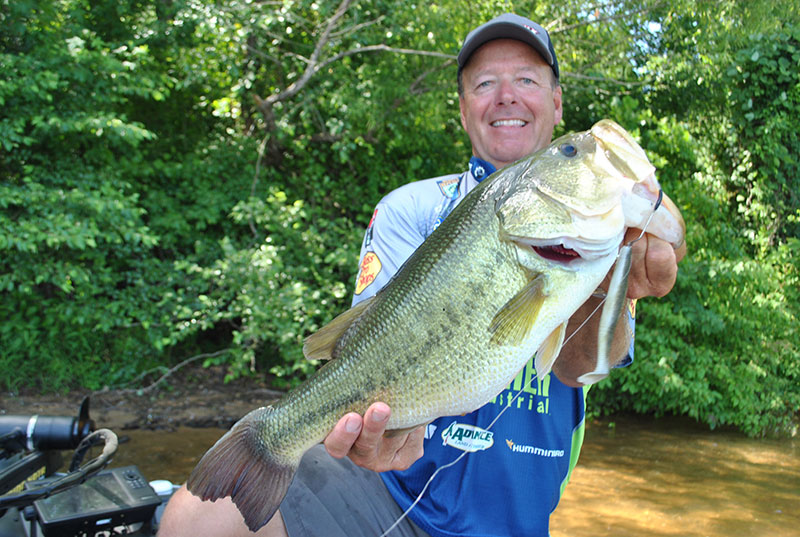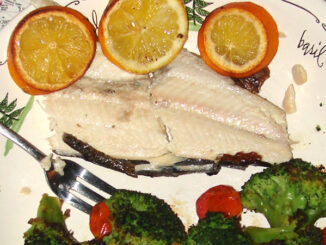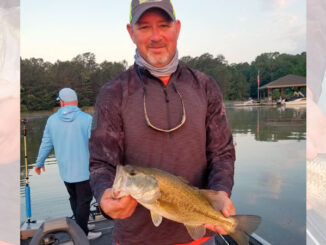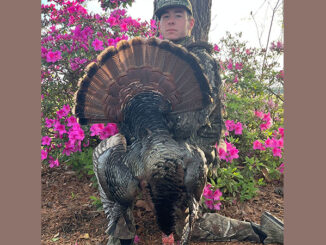
Bass anglers love soft plastics in April
I have spent an awful lot of time as a pro bass fisherman with a jig tied on my baitcasting rod. It’s a great lure in February and March, and then on again in the summer.
But when April arrives, I don’t think there’s any question that most of the rods on the deck of my Phoenix bass boat will have some kind of soft-plastic bait tied on – usually one of three ways.
April is one of my favorite months to fish, no doubt. The weather in the Carolinas is as good as it’s going to get, and there’s so much going on. It’s not necessarily the best time to go and catch a lot of fish, and that’s not just for bass. You have a lot of bass spawning in April, a lot of prespawn and postspawn fish. You can catch them on topwaters, hard-plastic baits like crankbaits, and soft-plastic baits.
I don’t think there’s a better time to fish a soft-plastic bait than April, and you’ve got to start with a Texas-rigged worm. You can catch a lot of bass just casting to shallow cover, and the primary cover can be different at different lakes. A lot of our developed lakes will have boat docks, and then lots of lakes will have shallow wood (buttonwood bushes or willows), and some will have shallow vegetation. There’s a lot of stuff to fish around. A lake with boat docks makes it easy to fish.
Rig it up
Fishing a Texas rig is just a neat way to catch fish, whether you’re using a Senko, a swimming worm, a cut-tail worm. You really need to use natural colors this month: watermelon seed, watermelon red, green pumpkin, green pumpkin/gold, green pumpkin/purple. I’ll use a 1/16-, 1/8- or 3/16-ounce slip sinker; you’re fishing shallow. You’re casting to shallow cover, and it’s a process of elimination. If I fish two boat docks and catch two fish, I’m going to fish more boat docks. If I fish two willow bushes and catch two fish, I’m going to fish more willow bushes. It’s easy to figure out.
Another way to fish a Texas-rigged soft plastic is weightless. You just don’t slide on the sinker. If fish are really shallow, and a lot of them will be in 2 feet of water or less, you don’t need a weight to get it to the bottom. The weight of the plastic and the hook will get it down, no matter what kind of soft plastic you use. If you’re fishing heavy cover that shallow, make sure to keep the hook point embedded in the plastic.
You see a lot of anglers Texas-rigging a creature bait, but that’s more of a February or March thing, a prespawn technique. When April arrives and fish are in all stages of the spawn, I want to fish a Senko, any stickworm, or a ribbontail worm, something that moves water. I want the thump and vibration and the way that kind of bait will move water in a natural fall.
The third way I fish a soft-plastic bait is one I use a lot, maybe 50% of the time. It’s the only time I leave the hook exposed, and you’ve got to be careful with that. It’s a wacky rig. You can use a Senko, a swimming worm, whatever. I use a VMC Neko rig hook, which is a straight-shank hook that comes with or without a weed guard, in this case, two pieces of fluorocarbon. The fluoro is invisible underwater, and it will keep you from hanging up. But I recommend fishing without the weed guards if you can, if you’re not fishing heavy cover. You don’t need it around most boat docks.

Belly hookin’
My favorite soft-plastic to wacky rig is a 5-inch Senko. You hook it right in the middle, like a nightcrawler, leave the point of the hook exposed, cast it and it will sink to the bottom. The weight of the hook and bait helps it fall naturally, straight down. Fish can’t resist it. April is my favorite month to fish a wacky rigged worm. I just cast it and let it fall to the bottom, then twitch my rod tip to move it up and down.
I am known to be a power fisherman. I use a baitcasting outfit almost all the time. But when I’m wacky rigging, I’m fishing a spinning outfit, a 7-foot, Mark Zona Lew’s rod and reel spooled with 15-pound Sufix braid, with an 8-pound Sufix fluorocarbon leader. Depending on the water clarity, the leader is typically 18 inches to 2 feet long. But if the water is super-clear, maybe 4 feet. My rule of thumb is, if it’s super clear, I want the leader knot right outside of my reel when I’m casting. The fish can’t see the fluoro, but they can see the braid.
Being a tournament fisherman, it’s all about landing fish. If I can cast a Texas rig with a baitcaster, I can control the fish better, and that’s what I want to use. On low-light, windy days when I’m not concerned with visibility, I’ll use a Texas rig every time. But on clear days, on lakes that get a lot of fishing pressure, I may use a wacky rig 50/50 with a Texas rig.
So when you head to your favorite lake or river in April, have rods on your casting deck rigged these three ways. It will put you a step ahead when it comes to catching those aggressive, April bass.





Be the first to comment